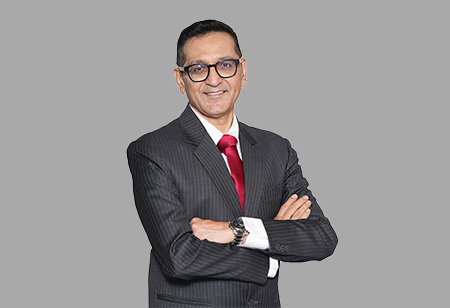
In an interaction with Industry Outlook, Soham Mehta, Managing Director at Advent Envirocare Technology, discusses how Zero Liquid Discharge (ZLD) is becoming essential for industries in land-locked and high-pollution zones, driven by regulatory pressure and water scarcity, while highlighting technical, cost, and waste disposal challenges companies face in adopting and upgrading to efficient ZLD systems. Soham Mehta brings over two decades of expertise in industrial wastewater treatment, ZLD systems, and effluent reuse. He has led major treatment projects across India, focusing on sustainable, cost-effective solutions in advanced environmental engineering.
With ZLD systems seeing faster uptake in sectors like textiles and pharma, how are companies balancing compliance needs with the pressure to reduce freshwater use in state-specific contexts?
It is not just textiles and pharmaceuticals. ZLD is becoming the norm for all industries located in land-locked regions, without access to proper disposal infrastructure or CETPs.More often than less, the driver for ZLD is not reduction of freshwater intake, but regulatory compliance for the want of proper disposal infrastructure. That the reduction in freshwater requirement, with its associated costs and the challenges of availability, is turning out to be great lateral benefits to those adopting ZLD systems. As such, the precursor to ZLD, the Minimal Liquid Discharge (or MLD), is already working out to be cheaper than freshwater in terms of operating costs for many units around the country, especially those where water availability and quality are an issue and prices are high. Tamil Nadu, Gujarat, Rajasthan, Karnataka and Maharashtra are some states where this might be true.
What practical challenges do industries face when upgrading older wastewater systems to meet ZLD standards, and how are they managing the additional cost and downtime involved?
The key to a viable ZLD project is to maximize recovery of water through membrane systems, with Reverse Osmosis being most common. Maximizing the recovery of RO, in turn, largely depends on good pretreatment prior to feeding the wastewater to RO. Essentially, the feed to RO should only consist of dissolved salts, and the pretreatment should be top-notch to get there. The old effluent treatment plants in industries barely meet even the disposal standards they were supposed to meet prior to the ZLD mandate. Upgrading them to meet the quality fitting for high recovery across RO requires true expertise in effluent treatment, not just RO. Lack of space is yet another issue commonly faced by older units. Compared to a greenfield ZLD project, such brownfield ones require experienced and highly competent vendor partners or consultants and that perhaps is the only way to manage the challenge, given that in-house talent is likely to fall short on these needs.
As enforcement around industrial water discharge gets stricter, how are companies in high-pollution zones like Vapi or Panipat responding with ZLD investments?
Industries near the coastal areas, such as Vapi, are seriously contemplating deep sea discharge wherein discharge of higher TDS is permissible, unlike the TDS of 2100 mg/L otherwise. In such a situation, many industries with low TDS in their effluent can benefit by going in for Minimal Liquid Discharge (MLD) limit the water recovery such as to meet the TDS norms of disposal. On the other hand, inland areas like Panipat, where discharge is not permissible at all, investment in ZLDs is must. For clusters, ZLD CETPs may make more sense because of the economies of scale and efficient operations by professional agencies. As of now, while ZLD-based ETPs have been or are being established, the compliance is still not absolute.
What kinds of treatment setups are helping medium-sized companies adopt ZLD without facing huge costs or maintenance burdens?
ZLD plants are capital-intensive and are complex to operate and maintain. It makes better sense for nearby companies to pool together and have a CETP based on ZLD.For industries with discharges of over a thousand cubes per day, having their own plant serves well, with their full control. Segregation of streams according to TDS levels many times offers a more cost-effective approach, as also decentralized recycling within the industry. End-of-the-pipe ZLD usually incurs higher costs. Adopting technologies that concentrate brine to higher levels than conventional RO systems is a necessity to keep the operating costs to a manageable level.
Also Read: Material Handling Safety in 2025: New Standards and Compliance Tips
How are companies handling the leftover waste from ZLD systems—especially brine and sludge—in places where disposal options are limited?
In the majority of industrial effluents, two salts dominate the composition of reject brine from RO or brine concentrators, which are sodium chloride and sodium sulphate. Sodium sulphate is a recoverable salt, and hence, the effort should be made to maximize its concentration and minimize NaCl and other mixed salts. Recovery of sodium chloride is possible to some extent in the presence of impurities. The mixed salt remaining after any recovery has no potential use and is required to be disposed of in secured landfills only, no matter what the distance.
We use cookies to ensure you get the best experience on our website. Read more...